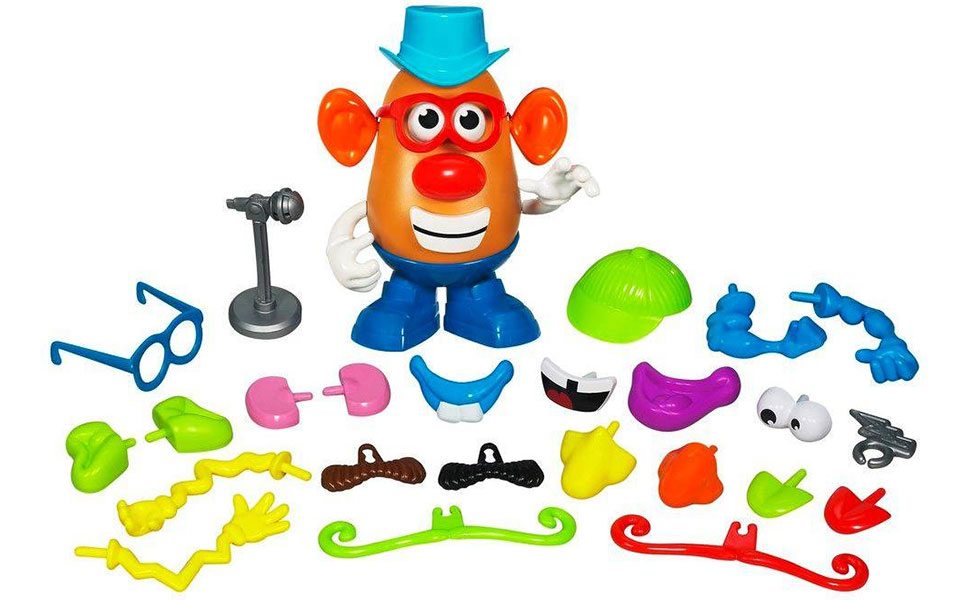Picture from hasbro.com
This toy includes the following materials:
There are many different types of Mr. (and Mrs!) Potato Head, so parts and pieces will vary depending on the theme. Generally, the toy comes with a plastic “potato” body and accompanying body parts.
8 Ways to Play:
- Categorization: If you are like us, you have more than one set of body parts for Mr. Potato Head. Grab your bucket of parts and practice sorting them into various categories such as color, size, number, body part, etc.
- Following Directions/Sequencing: This can be done in many ways. You can give verbal directions (1st, 2nd….) for your child to follow or change it up and have them be the “teacher” or director and tell you what to do and in what order. This activity can be modified with written instructions or you can use pictures to make a visual schedule of the order.
- Requesting: Place the pieces in a clear bag or container and then hand just the potato body to your child. This way your child can see the pieces, but you get to hold onto them. Withhold the pieces until they make a request, using a practiced phrase if needed, such as “I want the _____.”
- Similarities and Differences: This works well if you happen to have two or more sets of Mr. Potato Head. Using at least two potatoes, assemble them in a similar fashion, but change just one piece (or make them all different but with one piece that is the same). See if your child can figure out what is the same or different! And it’s always fun to let your child be the director here again, putting together the potatoes for you to uncover the similarities and differences!
- Social Scripts: Use Mr. Potato Head to act out social scripts with your child. Set up cars and talk about a safety routine. Put Mr. Potato Head to sleep and have your child help wake him up and get him ready for school. Set up some dolls/legos/action figures and have your child help act out play and friendship skills. The possibilities are endless!
- Tactile discrimination: Learning to identify objects by touch alone, is an important milestone for development of higher level fine motor skills. This is also known as stereognosis. Mr. Potato Head can be used to address this skill. You can hide the body parts under a towel, in a tactile bin, or simply ask the child to close their eyes. Encourage your child to feel the arm, leg, nose, mouth, or eyes without looking, and then guess which body part it is. Once the child has guessed the body part correctly, they can then place it on the potato.Children can work on tactile discrimination as early as 2 and a half years.
- Developing body awareness: Mr. Potato Head can be a valuable tool for children to learn accurate placement of body parts. Recognition and awareness of location of a person’s facial features, arms, legs, and hair are important for building representational drawing skills. If a child does not know where the body parts go, make Mr. Potato Head for the child first, as a model. Point out the body parts (i.e. point to and say, “These are his eyes.”) as you put them together.
- Visual scanning and perceptual skills: There are many parts and pieces to Mr. Potato Head. Spread out the pieces in a bin or on the floor, and instruct the child to locate a specific piece. The child will then have to scan and search through the various pieces, to find the specific item being described. Give specific instructions. For example: you can say, “Find the pink hat.” or “Look for the green nose.”This activity addresses figure ground visual perceptual skills, an important skill for writing and reading.
Blog post by Anna Housman, MS, CCC-SLP and Katie Woolard, MS, OTR/L

